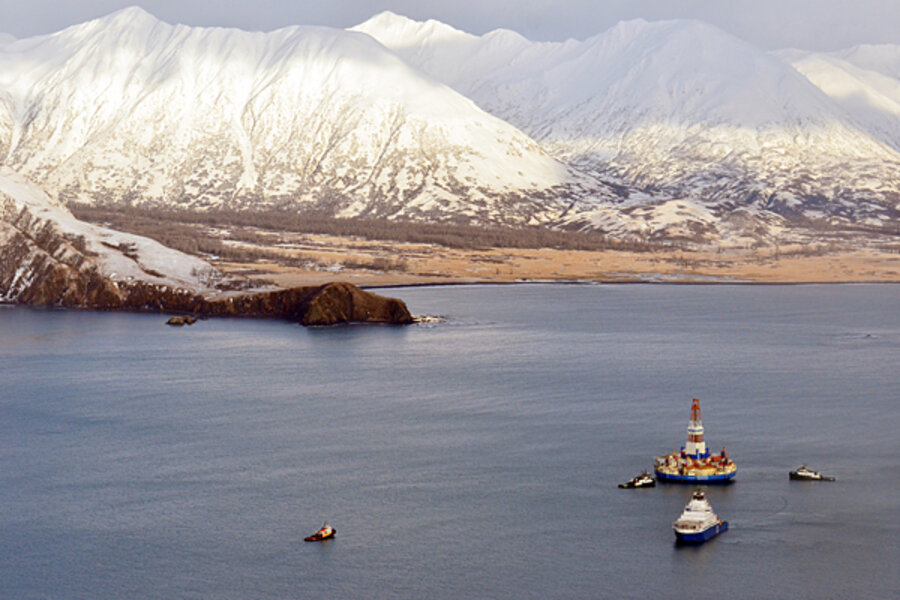Arctic drilling mishaps challenge promise of Alaskan oil
Loading...
If Royal Dutch Shell has learned anything from its Alaskan drilling venture, it's that the road to Arctic oil is a bumpy one.
Critics have sharpened attacks on the company after one of its oil drill ships came aground in late December while being towed through stormy Arctic waters. The accident capped off a series of setbacks in the company's multibillion-dollar effort to extract oil from Alaska's outer continental shelf.
So far no major leakage or serious injuries have occurred. If successful, Shell's foray into Arctic drilling could produce nearly 10 billion barrels of oil and 15 trillion cubic feet of natural gas over the next 50 years, according to a University of Alaska study prepared for Shell Exploration and Production.
Given the Arctic's notoriously harsh environs, however, opponents doubt the project's chances of safely supplying fossil fuel energy.
“The implications of this very troubling incident are clear – the oil industry is no match for Alaska’s weather and sea conditions either during drilling operations or during marine transit,” said Lois Epstein, Arctic program director for The Wilderness Society, in a statement.
Last summer, Shell's other drill ship lost its mooring and nearly washed ashore. The company suffered another setback when its oil containment vessel failed to meet required federal standards, thereby limiting the extent of their Arctic operations. In September, equipment failures and and unanticipated ice floes forced the company to halt drilling for oil.
With environmentalist groups calling on the Obama administration to ban Arctic drilling, Shell has gone on the offensive.
"We finished the 2012 drilling season, didn't have any incidents there, we didn't have any accidents," Shell Oil Co. President Marvin Odum said Wednesday, as reported by EnergyWire. "It was done safely; it was done from an environmental perspective, the way we wanted it done."
The Department of the Interior will test the validity of that statement. Secretary Ken Salazar announced Tuesday the department was beginning a 60-day, high-level assessment of Shell’s management and operations in the Arctic region. The US Coast Guard will also investigate the latest incident.
An outright ban seems unlikely. White House officials point to the increased drilling safety measures already in place in the aftermath of the 2010 Deepwater Horizon oil rig explosion that killed 11 people and spilled 4.9 million barrels of oil into the Gulf of Mexico.
But Republicans worry that President Obama could effectively stifle new offshore drilling – in the Arctic and elsewhere – by slowing down or stopping the issuing of new drilling permits.
Mr. Salazar indicated Tuesday that, despite setbacks, the Obama administration would support Arctic exploration.
“Developing America’s domestic energy sources is essential for reducing our dependence on foreign oil and creating jobs here at home and the Administration is fully committed to exploring for potential energy resources in frontier areas such as the Arctic,” Salazar said in a statement. “Exploration allows us to better comprehend the true scope of our resources in the Arctic and to more fully understand the nature of the risks and benefits of development in this region, but we also recognize that the unique challenges posed by the Arctic environment demand an even higher level of scrutiny.”
Development of the outer continental shelf would create an annual average of 54,700 new jobs through 2057, according to the University of Alaska study prepared for Shell. Payrolls to employees in Alaska and the rest of the US would total $145 billion, the 2011 study found.





